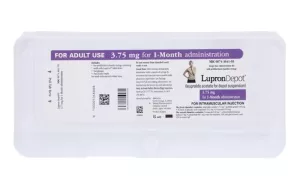
Amlodipine vs Atacand Comparison
Last Updated on April 25, 2025
Which is better for blood pressure, amlodipine or nifedipine?
Contents
When considering the best medication for managing hypertension, particularly between amlodipine and nifedipine, it is critical to understand their mechanisms and effectiveness. Amlodipine is a calcium channel blocker that helps relax blood vessels, thus lowering blood pressure. It is often preferred due to its longer half-life, which allows for once-daily dosing and stable blood pressure control. On the other hand, nifedipine can also effectively lower blood pressure but is sometimes associated with more frequent dosing and a higher incidence of side effects, including flushing and tachycardia.
Key Factors to Consider
- Dosage Frequency: Amlodipine is typically taken once daily, while nifedipine often requires multiple doses.
- Side Effects: Consider the potential side effects of each medication, where amlodipine may offer a more favorable profile.
- Effectiveness: Evaluate individual response to treatment, as some patients may respond better to one over the other.
- Cost: Review the cost and insurance coverage for each medication, as this can impact adherence.
- Drug Interactions: Identify any other medications being taken that could interact with either drug.
- Personal Health History: Take into account personal medical history, including any other conditions that may influence medication choice.
While both amlodipine and nifedipine can be effective in treating hypertension, individual response and tolerability may significantly influence which medication is better suited for a patient. Importantly, healthcare providers consider the patient’s overall health and lifestyle when recommending a treatment option. It can often take some trial and error to pinpoint the medication that achieves optimal blood pressure control without unacceptable side effects.
A solid understanding of both medications’ mechanisms, benefits, and potential drawbacks is essential for making informed decisions regarding hypertension management.
Ultimately, the choice between amlodipine and nifedipine may depend on various factors, including personal preference, lifestyle considerations, and previous experiences with hypertension treatment. It is crucial for patients to have open discussions with their healthcare providers to determine the most appropriate option for their unique situation.
Amlodipine vs Atacand: Pros and Cons
When considering treatment options for hypertension, it’s important to compare medications to determine the best fit for individual needs. Both Amlodipine and Atacand are commonly prescribed to manage high blood pressure, yet they function differently and have distinct benefits and drawbacks. A thorough analysis of each medication can assist patients and healthcare providers in making informed decisions regarding hypertension management.
Amlodipine is a calcium channel blocker that helps relax blood vessels, thereby reducing blood pressure and increasing blood flow. It is widely recognized for its prolonged duration of action and efficacy in controlling hypertension with a single daily dose. In contrast, Atacand, the brand name for candesartan, belongs to a group of medications known as angiotensin II receptor antagonists. It works by blocking the action of a substance in the body that causes blood vessels to tighten, leading to a decrease in blood pressure.
| Medication | Classification | Administration Frequency |
|---|---|---|
| Amlodipine | Calcium Channel Blocker | Once Daily |
| Atacand | Angiotensin II Receptor Antagonist | Once Daily |
| Effect on Heart Rate | May increase heart rate | |
| Effect on Kidney Function | Minimal effect |
When evaluating Amlodipine and Atacand, it is essential to consider the specific benefits associated with each medication. While Amlodipine primarily targets the vascular system, Atacand has a more systemic approach. Additionally, the choice may also depend on patient history, concurrent conditions, and potential side effects.
Amlodipine Benefits
Amlodipine is often favored due to its accessibility and robust research backing its effectiveness in lowering hypertension. Patients appreciate its once-daily dosing, which contributes to adherence. Other benefits include:
Benefits of Each Medication
- Effective blood pressure control
- Well-tolerated with minimal side effects
- Once-daily dosing for convenience
- Proven cardiovascular risk reduction
- Flexible use in combination with other antihypertensives
Atacand Benefits
Atacand is particularly beneficial for patients who may experience adverse effects from other antihypertensives. It is also noted for its renal protective effects, making it a valuable option for patients with conditions like diabetes. Other highlights include:
Amlodipine may increase heart rate, while Atacand is primarily neutral in this regard, which can be advantageous for certain patients.
Amlodipine vs Atacand: Side Effects Comparison
Understanding the side effects of different medications is essential for making informed health decisions. Both Amlodipine and Atacand are commonly prescribed for managing hypertension, yet they each bring a distinct profile of potential side effects. By comparing these two medications, we can highlight their differences and equip patients with the necessary information to discuss options with their healthcare providers.
The side effects associated with Amlodipine, a calcium channel blocker, often contrast with those seen in Atacand, which is an angiotensin receptor blocker (ARB). Amlodipine is typically effective for controlling blood pressure but may present challenges in terms of tolerability. Conversely, Atacand is often deemed more patient-friendly concerning side effects, but this perception may vary among individuals. In this section, we delve deeper into their comparative side effect profiles.
| Medication | Common Side Effects | Serious Side Effects |
|---|---|---|
| Amlodipine | Swelling, dizziness, flushing | Rapid heart rate, chest pain |
| Atacand | Dizziness, fatigue, headache | Kidney issues, low blood pressure |
Common Side Effects
- Dizziness
- Fatigue
- Swelling in ankles or feet
- Headaches
- Flushing
- Rapid heart rate
- Low blood pressure
Both Amlodipine and Atacand share some common side effects, but their incidence and severity can differ significantly. While Amlodipine may lead to more noticeable swelling and flushing, Atacand primarily contributes to a slightly higher risk of fatigue and headaches. Patients taking these medications should monitor their reactions closely and report any persistent or severe symptoms to their healthcare professionals to ensure appropriate management.
Comparative Side Effect Profile
When evaluating the overall side effect profiles, it’s essential to weigh the benefits against the potential drawbacks of each medication. Amlodipine’s side effects, particularly related to swelling and flushing, might deter some patients from continuing therapy. In contrast, Atacand tends to have a more favorable side effect profile, making it a preferred choice for individuals who are sensitive to medication side effects. Ultimately, the choice will depend on individual responses and other health considerations.
Which One is Preferred and Why?
When comparing Amlodipine and Atacand for the treatment of hypertension, it’s essential to consider their mechanisms of action, effectiveness, and side effects. Atacand, which contains candesartan, works as an angiotensin II receptor blocker (ARB) and is primarily focused on relaxing blood vessels to reduce blood pressure. In contrast, Amlodipine is a calcium channel blocker that prevents calcium from entering cells of the heart and blood vessel walls, leading to lower blood pressure. Depending on individual patient needs and medical history, one may be more suitable than the other.
Steps to Determine Preference
- Assess the patient’s specific health conditions.
- Evaluate the overall effectiveness of each medication for the individual.
- Consider the patient’s tolerance for side effects between the two options.
- Analyze any potential drug interactions with other medications the patient may be taking.
- Identify cost and insurance coverage factors for both medications.
- Discuss patient lifestyle and adherence preferences for each treatment.
Understanding how Atacand influences the renin-angiotensin system can help in making informed decisions about hypertension management. It has shown advantages in protecting kidney function, especially for patients with diabetes. Medical professionals often weigh these benefits against Amlodipine’s rapid blood pressure-lowering effects. Each patient’s benefit-to-risk ratio will determine which medication is ultimately preferred for hypertension treatment.
Alternatives
When considering alternative medications for hypertension management, it’s essential to explore various options beyond Amlodipine and Atacand. Both medications serve to control blood pressure but may not be suitable for every patient due to factors like side effects, effectiveness, and personal health conditions. Exploring alternatives can provide additional choices that might better fit an individual’s therapeutic needs.
Comparison of Alternative Medications
| Medication | Type | Primary Use |
|---|---|---|
| Losartan | Angiotensin II Receptor Blocker | Hypertension |
| Ramipril | ACE Inhibitor | Hypertension and Heart Failure |
| Metoprolol | Beta-Blocker | Hypertension and Heart Issues |
| Hydrochlorothiazide | Thiazide Diuretic | Hypertension |
It is crucial for patients to consult healthcare professionals before making any changes to their medication regimen. Alternate medications can also provide varied mechanisms of action which may lead to different side effect profiles. Each patient’s response to blood pressure medications is unique, and what works well for one individual may not suit another, making it vital to tailor treatment plans accordingly.
Alternative Medications to Consider
- Losartan
- Ramipril
- Metoprolol
- Hydrochlorothiazide
- Telmisartan
- Nifedipine
While both Amlodipine and Atacand have their unique benefits, understanding these alternatives can lead to better medication adherence and improved long-term outcomes. Overall, discussing any potential changes with a healthcare provider is crucial for safely managing hypertension while considering the efficacy of options like Amlodipine and others. As patients weigh their options, it’s always recommended to stay informed about both benefits and risks associated with each medication choice.









Add comment